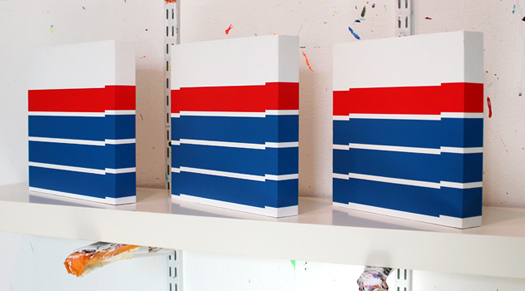
Three studies for my Voyedge series of minimal paintings.
My most recent artistic voyage has been my Voyedge collection of new minimal paintings. This series is very hard-edge in spirit, and is in many ways a descendant of my ‘Confluent series of paintings, from January of this year.
Thus far the Voyedge series encompasses five small studies and two larger minimal paintings. Down the road, I’d like to continue to explore different colorways with this series — particularly combinations involving fluorescent colors.
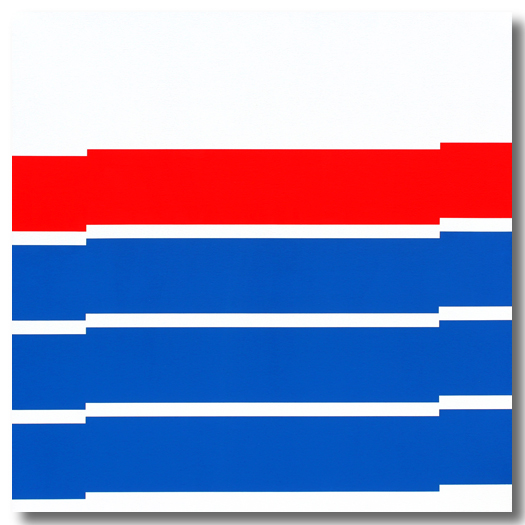
Voyedge 1. 2015. Acrylic on canvas. 40 inches square (102 x 102 cm).
With the Voyedge series, my commitment to hard-edge, minimal painting remains clear. This is a way of making art that has felt like second-nature to me for many years.
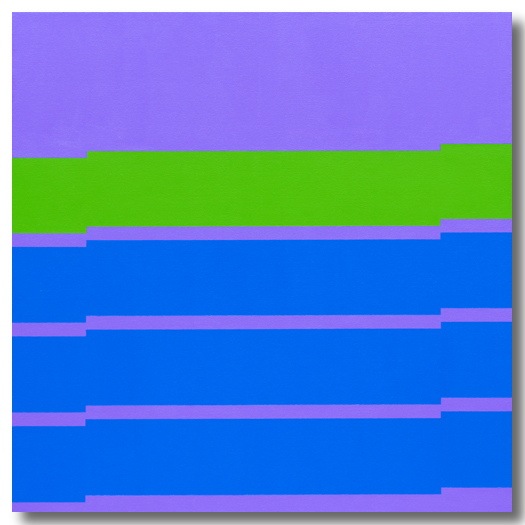
Voyedge 2. 2015. Acrylic on canvas. 40 inches square (102 x 102 cm).
If one tendency, or evolutionary theme, emerging in this side of my work, I would say that it is becoming more angular — increasingly characterized by right angles.
There is something about the square, and the straight line in general, that is completely modern to me. The square is the progenitor of the pixel, the essential building block of digital culture. Expressing the same design in straight lines, as opposed to curves, somehow yields a more contemporary expression.
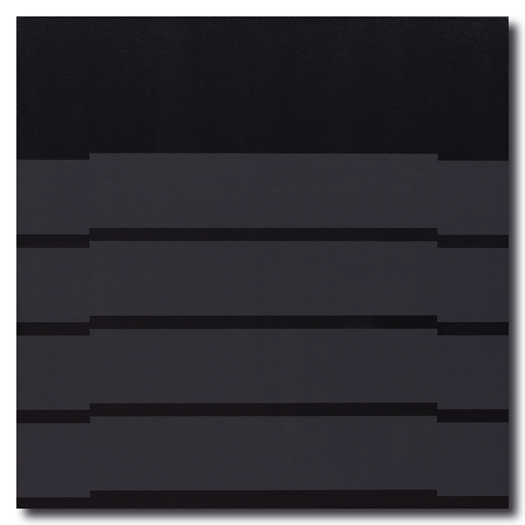
Voyedge 3 (‘Darkhorse’). 2015. Acrylic on canvas. 40 inches square (102 x 102 cm).
I realize that minimal painting is not for everyone. These sparing compositions, as a rule, have clean lines. They are nonobjective in nature; there are no mountains, or flowers, or portraits to relate to. As such, these paintings resist narrative.
Perhaps this is what I find so enjoyable about minimal painting: The making of something new, materializing an otherness not found in the everyday world that surrounds us.
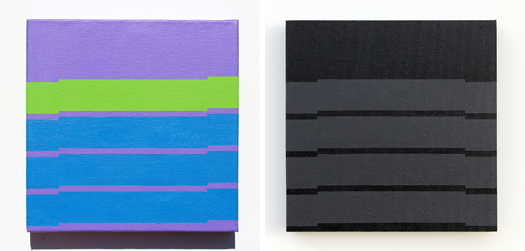
Voyedge studies, from left: Voyedge 2 (Study); acrylic on canvas; 10 inches square (25.4 x 25.4 cm). Voyedge 3 (‘Darkhorse’ Study); acrylic on panel-mounted canvas; 10 inches square (25.4 x 25.4 cm).
The Voyedge collection continues to evolve. I look forward to sharing more pieces with you soon.